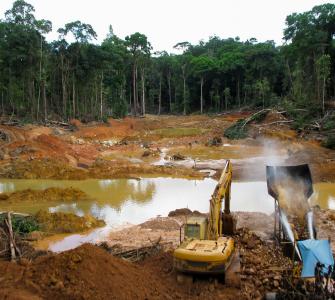Colombia is one of the biggest emitters of mercury in the world and artisanal and small-scale Gold Mining (ASGM) is responsible for most of these emissions. ASGM releases an estimated 150 tons of mercury into the environment every year, particularly from the regions of Choco, Antioquia, Bolivar and Cauca (UNDP 2021).
As economic incentives are driving these harmful mercury-based practices in ASGM, Conservation Strategy Fund (CSF) led a Targeted Scenario Analysis (TSA) to better understand the costs and revenues across the ASGM supply chain and support the transition towards cleaner practices.
Led by UNDP Colombia as part of the GEF planetGOLD project, this project worked with pilot projects in Antioquia and Cauca to test alternative technologies and cleaner practices, appropriate to each regional context.
This analysis built on existing data in each region through site visits and primary data collection, with an emphasis on better understanding existing and expected revenue to miners and processing plants. Project results were presented in technical documents and a series of in-person presentations to miners and decision-makers in the region, including the Ministry of Mines and Energy, the Ministry of Environment, and the Ministry of Health.
Using CSF’s economic tools and a strategic incentive package, among other efforts, the GEF planetGOLD project is working to incentivize better practices and relationships among economic actors and reduce mercury use by 20 tons over the next five years.
Learn more about planetGOLD Colombia here.
Learn more about UNDP's TSA approach and the official TSA summary here.
Read about CSF’s other Targeted Scenario Analyses (TSAs) completed in Ecuador, Colombia, Liberia and Paraguay.
Photo Credit: Shutterstock.com

